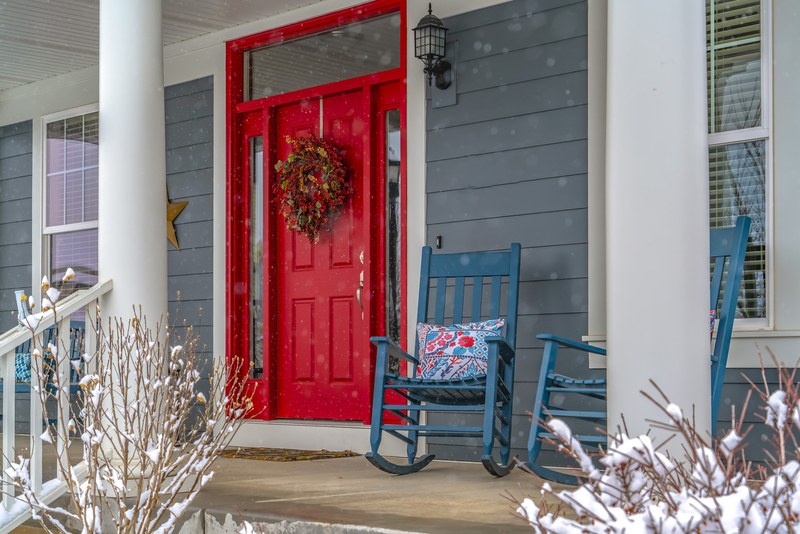
Depending on where you live, winterizing your home can mean different things. But no matter where you’re planted, the process should encompass both the physical structure of your home as well as your belongings and yard. “Taking the time to get your home, yard, and equipment ready for the changing seasons helps ensure that they perform as needed for many years to come [while] avoiding costly repairs or replacement later on,” says Kevin Busch, VP of operations for Mr. Handyman.
It’s no surprise that protecting your belongings is always a good idea, but David Flax, president of Window Genie, points out that taking these extra steps can actually save you money by lowering your heating bills. Plus, it will help keep you comfortable throughout frigid temperatures.
Preparing your home for the winter goes beyond getting the toys out of the yard or storing your mower for the season. To help you cross off the most important to-dos, Busch and Flax share their checklist for making sure your home is ready for the season ahead.
1. Gutters and Downspouts
One of the first tasks to complete is to clean your gutters. “For cold weather climates, it is a good idea to make sure your gutters and downspouts are cleaned and working properly,” says Busch. “This can help you avoid issues with ice dams or leaks.” Even if you don’t live in a location that gets snow or ice, winter can oftentimes signal the rainy season, which means you’ll want to make sure your structure is in good shape and free of fallen leaves, nests, and other debris.
2. Outdoor Faucets
The last thing you want in the middle of winter is a burst pipe. To avoid that scenario, take precautions when it comes to preparing your exterior hose bibs and faucets. “If you can, shut off the water to outside faucets and open the valves to drain any water,” says Busch. That even goes for faucets that are designed to withstand freezing temperatures. Flax also suggests placing insulated covers on exterior spigots for an extra layer of precaution. Your waterlines are one area where you don’t want to skimp on your pre-winter homework.
3. Water-Utilizing Equipment
In addition to spigots, water-related exterior features also need attention. “Take the time to drain hoses, sprinkler systems, pressure washers, and any other equipment that handles water to ensure water doesn’t freeze inside them and create costly repairs in the spring,” says Busch. Store all equipment out of the elements, such as in a garage or basement, to keep it in top shape during its off-season.
4. Fireplace
Fireplaces are put to good use during the winter months, but if that’s not the case for your home, you’ll need to guard against the cold here too. “If you have a fireplace and you don’t use it a lot, make sure the damper is closed so cold air cannot get in,” says Flax. “If there is no damper then you may want to consider using a piece of cardboard to cover the opening into your living space to keep out the cold air.” Whether you close your damper or opt to insulate your home with cardboard, remember to set things back in place should you desire to use your fireplace.
5. Windows and Doors
When it comes to windows and doors, the process gets a little more extensive, but it all starts with making sure everything is locked. Busch says this creates a seal to keep warm air in and cold air out. You should also assess your home’s window stripping to ensure it doesn’t need to be replaced and make sure windows are properly caulked. “You can add another layer of glass, typically called a storm window, to help keep out the cold,” says Flax.
For a less expensive option, Flax suggests using a plastic window insulator kit or even hiring a professional to apply window film to your windows. “Window film actually helps insulate your windows in the winter. Glass is porous, therefore allowing your heat to escape through the glass,” he says. “It will also help reduce fading, level out hot and cold spots in your home, and make your home more comfortable in both the winter and summer months.”
When it comes to doors, Flax suggests utilizing a draft snake. “A draft snake is simply a long piece of material filled with cotton or some other type of insulated material that keeps the drafts from coming under the door,” he says.
6. Garage Doors
You might think your garage is well-suited for the coming temperature drop, but don’t sleep on prepping this zone. “Your garage door can allow a lot of cold air into your home,” says Flax. “You want to check the bottom gasket and make sure it seals against the floor properly and check around the sides to make sure they are sealed.” Some garage doors are insulated, but if yours isn’t, Flax suggests purchasing an insulation kit, which you should be able to find at any local hardware store. “This is not a hard project for a homeowner to take on themselves,” he says.
Patricia Shannon, Better Homes & Gardens

